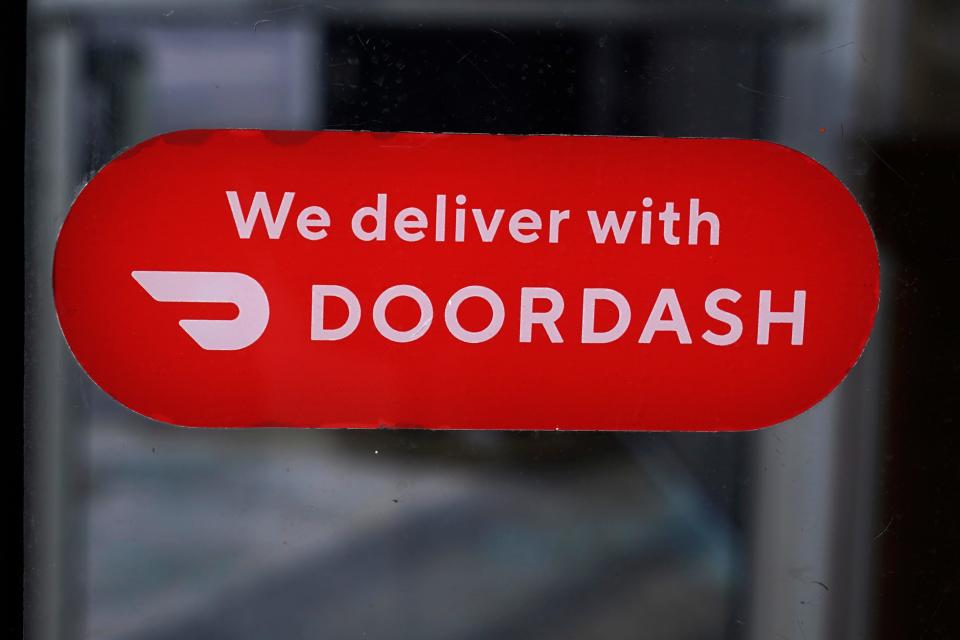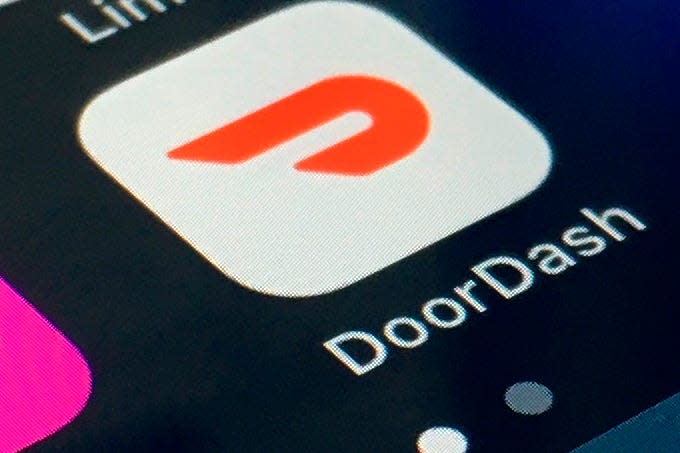What do DoorDash drivers get paid? It's complicated, but they depend on your tips
It was 3 a.m. and raining hard one recent night when Howell resident Michael Herlihy accepted a DoorDash order offering him $15 to deliver food from White Castle to two different customers who lived 11 miles away in Freehold.
Herlihy accepted. He got in his car, picked up the food, made the two deliveries then clicked on the DoorDash app to see the breakdown in his pay. Most of it came from one customer's generous gratuity. The base pay from DoorDash, once $2 just two months earlier, had been cut by 50%.
"I saw I got paid $1 for each delivery, and one of the customers didn't even leave me a tip," Herlihy, 60, said. "I have to use my gratuity money to pay for gas. To me it's just insulting they would actually lower base pay that low."
Herlihy is among the workers participating in the so-called gig economy, driving not as a traditional employee, but as an independent contractor for companies like DoorDash and Uber Eats.

Booze on the go: DoorDash now delivers beer, wine to New Jersey customers
The setup allows them to set their own hours, turn down orders, and remain free to work other jobs. But it also leaves them without the protection of labor laws like minimum wage. So they are heavily dependent on the generosity of customers providing tips.
The arrangement between the companies and their drivers is getting a closer look from regulators and labor advocates nationwide, who say drivers should be compensated better.
"We’re moving towards recognizing there are a lot of ways people are working and getting paid for it, and they should be treated with dignity and should receive worker protections," said Peter Chen, senior policy analyst for New Jersey Policy Perspective, a left-leaning research group. "I think that’s something we’re moving toward. But it’s not perfect."
'We all resent them in some way': For restaurant owners, delivery apps are 'a necessary evil'
Working in the gig economy
Herlihy started driving for DoorDash in 2021, drawn to the idea that he could set his own hours and make some extra money while he recovered from injuries sustained in an accident.
He became a Dasher, the company-coined term for its drivers. And he became one of 16% of Americans who have worked in the gig economy, according to a Pew Research poll, signing up as independent contractors for companies like Uber, Instacart and TaskRabbit, piecing together jobs like a jazz band.

Hot sauce and cinnamon twists: DoorDash's top orders for 2023 include odd pairings
DoorDash was founded in 2013 by a group of Stanford University students who provided restaurants and consumers with technology and a work force to solve a classic "pain point," paving the way for food delivery service that until then was largely confined to pizza shops and Chinese restaurants.
How it works: Restaurants receive DoorDash orders through a tablet provided by the company, and they pay a commission ranging from 15% to 30% of the sale. And customers ordering through the DoorDash website or app pay for the price of their food, local taxes, a delivery fee, a service fee and an optional tip.
The idea of leaving a tip before the service was provided instead of after was unusual. But DoorDash has grown. In the third quarter of 2023, the company had 543 million orders and $2.2 billion in revenue. And it is the biggest food-delivery service, with 66% of the market, according to Bloomberg. Uber Eats, with 23% of the market, ranks second.
"Technology played a role, but this was also a function of pent-up consumer demand and business needs to meet an age-old preference for the convenience of restaurant delivery," said Gary Minkoff, a professor of professional practice at Rutgers Business School in Newark and New Brunswick. "It just wasn’t something that was a focus for restaurants, for various operational reasons."
To resolve one operational issue, how to find enough workers to make deliveries, DoorDash turned to drivers willing to work as independent contractors. Drivers are paid a base pay, a tip and a premium during busy hours. They can get paid by the order or a guaranteed hourly rate. As independent contractors, they can decline an order if, say, they don't think it pays enough or is too far. But the company's pay is set by an algorithm and can fluctuate.
Herlihy said the base pay when he started was typically $3 an order. But now, he gets base pay of $2 on about 85% of his deliveries. "That will go up as more drivers decline the order," he said.
A DoorDash spokesperson said Dashers shouldn't measure their compensation on base pay alone, but should include tips and promotions and incentives, noting that drivers on average earn more than $25 an hour while on a delivery.
Pay for speed: Customers who don't tip DoorDash drivers will wait longer for deliveries, company warns
'Is this a good amount?'
It's a compensation system that has sent drivers flocking to online message boards, where they trade information about how to get the most pay out of an order. One new driver in northern New Jersey posted their DoorDash pay stub on Reddit last April showing one week of pay: $162.14, which included $72.25 from DoorDash and $89.89 in customer tips for 23 deliveries and 10 hours and 47 minutes of Dash Time.
"Is this a good amount?" the driver asked the group.
"That's subjective," one driver replied. "This equates to $15/hr before gas expense and putting miles on your vehicle."
"Don’t be afraid to decline orders that don’t pay enough," another wrote. "It’s better to spend five minutes inactive declining orders than taking 30 minutes to deliver one for $5."
Regulators and labor advocates are taking a closer look at the relationship between the gig-economy companies and their contractors, noting that if the workers were classified as employees, the companies would be required to pay at least minimum wage of $15.13 an hour in New Jersey and meet other obligations, like providing overtime pay and contributing to insurance programs.
New Jersey has tried to better define who can be considered an independent contractor with a three-pronged test.
Workers are free from control or direction of their performance by the employer.
The work falls outside the usual course of business or is performed outside of the usual place of business.
The worker is engaged in an independently established trade, occupation, profession or business.
New habits: Why are Americans spending so much on Amazon, DoorDash delivery long after COVID's peak?
The debate has sparked dust-ups elsewhere. For example, New York City last year required app-based delivery companies to pay drivers at least $17.96 an hour, not including tips. The rate is scheduled to increase to $19.96 an hour in April 2025. Drivers there had made on average $7.09 an hour, city officials said.
DoorDash said the higher wage would force it to raise fees for orders in New York City and move the option to tip on its app to after customers check out. Uber Eats said it would need to reduce the number of couriers in the city online at a given time.
And California voters in 2020 approved a ballot measure that defined app-based delivery drivers as independent contractors. The gig-economy companies contributed some $200 million to support the initiative. Opponents of the measure filed a lawsuit, and the case has yet to be resolved.
"There's a significant savings to the employer if they can classify an employee as an independent contractor," said Bruce Atkins, an attorney with Deutsch Atkins & Kleinfeld in Hackensack who represents workers in employment cases.
A DoorDash spokesperson said the company's flexibility is a chief reason drivers partner with it. She noted nine in 10 spend fewer than 10 hours a week on delivery and nearly eight in 10 say they choose to drive for DoorDash mainly because they can create their own schedules.
Herlihy would prefer he remain an independent contractor, noting he appreciates the chance to skip work when he doesn't feel up to it.
But he still found himself irritated this week. He decided to get paid by the hour, guaranteeing him at least a minimum rate. But he said he was sent a bunch of orders delivering food from Popeye's to customers who didn't leave a tip.
"You're just insulted by it," Herlihy said. "Some people, it rolls off their (back), but I was like, 'Wow.'"
Michael L. Diamond is a business reporter who has been writing about the New Jersey economy and health care industry for more than 20 years. He can be reached at mdiamodn@gannettnj.com.
This article originally appeared on Asbury Park Press: DoorDash drivers depend heavily on customer tips to get paid
